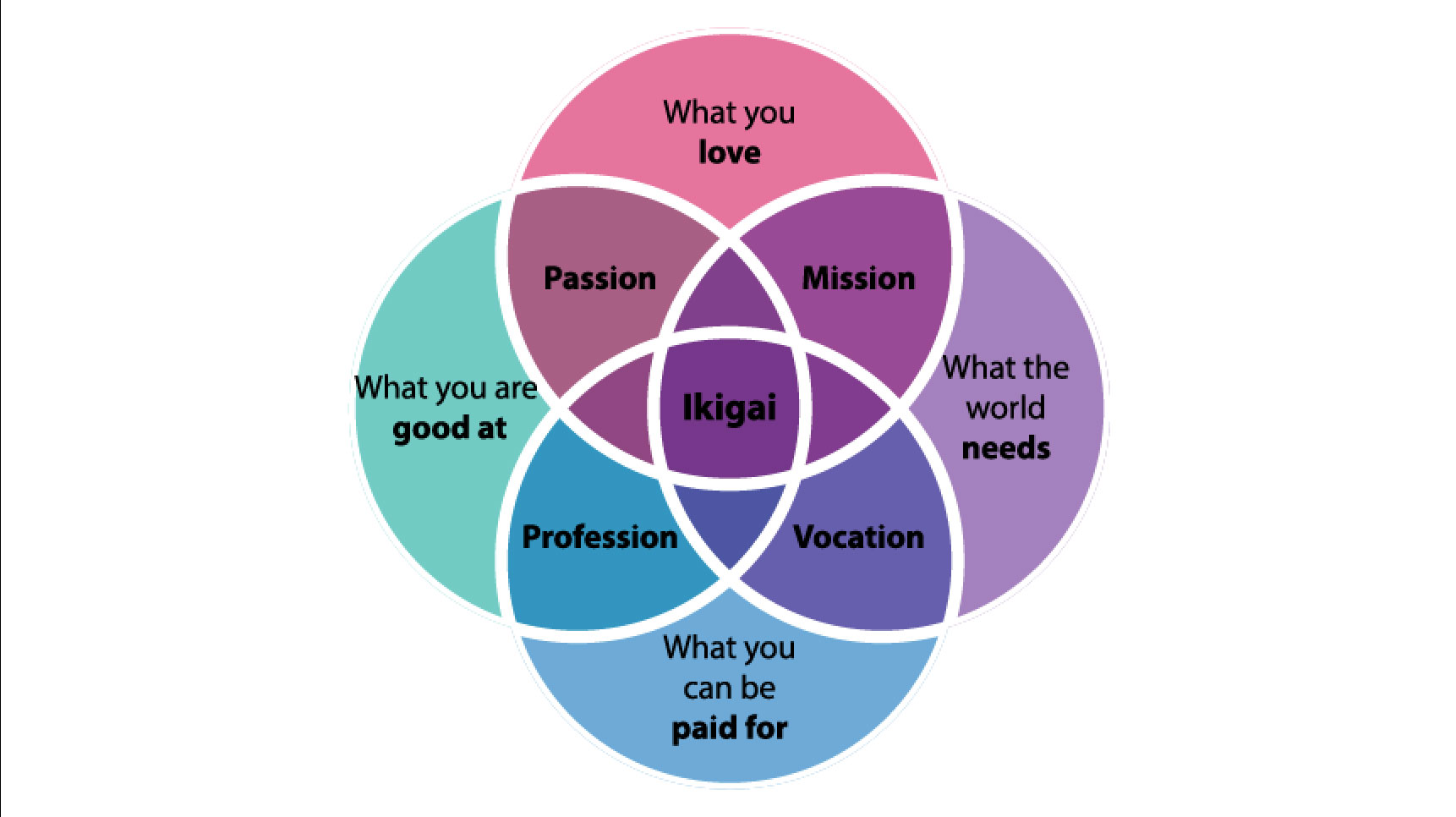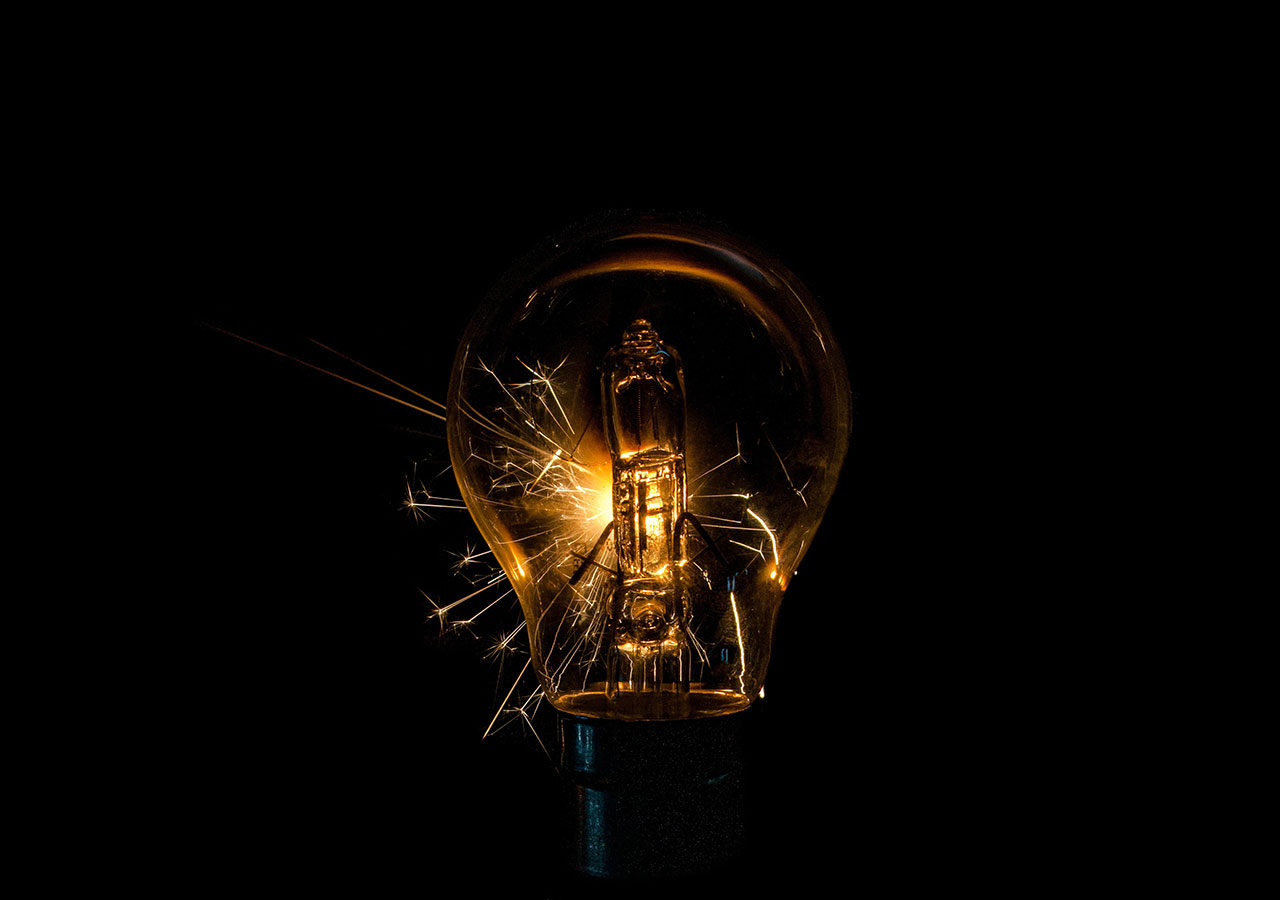What sets truly successful people apart from those who never realize their dreams? Is it daily habits? A willingness to take risks and try new things? Ability to build meaningful relationships that last?
No doubt all of these factors play a part in a highly successful life, but underlying all of these differences is a particular and profoundly powerful mindset.
While many people find themselves trapped in a fixed mindset bound by a limited view of their capabilities, high achievers adopt a growth mindset that evolves due to their grit and determination.
When we are fully concentrating on our highest aspirations and our most valuable, fulfilling activities, something wonderful happens, we achieve a state of mind that psychologists call a “Flow State”.
A Flow State is an optimal state of mind resulting from a single-minded focus on something meaningful and challenging. In sports, it is sometimes referred to as being “In the Zone”.
To consistently get in a state of flow, it’s not about using productivity hacks or the latest shiny new productivity tool, it’s about developing your mindset.
To develop the Flow Mindset necessary to achieve your full potential, you need to follow a personal productivity system with structure and accountability that allows you to become focussed and disciplined enough to achieve your long-term goals.
Getting More Done In Less Time

It is possible to get much more done in less time when you purposefully focus your mind, prioritize your highest value activities and follow an accountability system that addresses your mental obstacles and procrastination triggers.
The reality is that single-minded focus and time spent immersed in a focused state of flow will produce significant, measurable results, while short sprints of effort sandwiched between constant interruptions will lead to low performance and a sense of dissatisfaction.
Today, nearly all well-paying jobs are cognitively demanding, requiring sustained attention and navigation of the creative process past obstacles that distract and sidetrack most people. By developing a practical understanding of how to work yourself into a flow state, you will be able to fully test the limits of your capability.
Technology now allows work to be done virtually anywhere. The creative tools that act as the means of production are easily available on all kinds of digital devices.
This means that work can be easily rewarded based on measurable results, not just time spent in an office, which gives an enormous advantage to those who are highly focused and productive with their time.
Flow Research Into High Performance
“The happiest people on earth worked hard for their fulfillment. They didn’t just have the most peak experiences, they had devoted their lives to having these experiences. The feeling didn’t come when they were relaxing, when they were taking drugs or alcohol, or when they were consuming the expensive privileges of wealth. Rather, it often involved painful, risky, difficult activities that stretched the person’s capacity and involved an element of novelty and discovery.” – Steven Kotler, The Rise of Superman
The constant distraction of open-concept offices and the lure of checking smartphones has significantly reduced human attention to the point where it’s now shorter than a goldfish.
A study by Microsoft found that “human attention span has supposedly dropped from 12 seconds in 2002 to only eight seconds in 2013, which is a second shorter than a goldfish.”
Psychologists call this mental state we now pass much of our day as continuous partial attention.
Shorter attention spans and distracting environments have a huge cost in terms of procrastination as well as reduced confidence and life satisfaction. Research done on the effects of compulsive multitasking and smartphone checking at work has produced some attention-grabbing results:
- A study by the American Psychology Association found that just by cutting out multitasking, the average office worker could become 40% more productive at work.
2. A 10-year study of business leaders by Mckinsey Global Research Institute reported that executives were up to 500% more productive when in a state of flow.
3. A study done by Gloria Mark of the University of California at Irvine, found that a typical office worker gets only 11 minutes between each major interruption, while it takes an average of 25 minutes to return to the original task after an interruption.
4. The average office worker spends only 3 minutes working before they switch tasks and over 2 hours per day spent recovering from distractions.
This makes it nearly impossible to think deeply and get into that state of flow that is most productive, yet so elusive for most people.
Here’s how you can restore your attention by adding “flow triggers” to your day that will help focus your mind and block out distractions.
Internal Flow Triggers:
“If you are interested in something, you will focus on it, and if you focus attention on anything, it is likely that you will become interested in it. Many of the things we find interesting are not so by nature, but because we took the trouble of paying attention to them.” – Mihaly Csikszentmihalyi
Internal flow triggers are basically psychological strategies that drive attention into the present moment.
The foundational key to achieving flow is overcoming the tendency to be constantly multitasking to get that fresh dopamine surge. Instead, you want to master the focus to do one thing at a time with your complete attention.
Here are the internal flow triggers that you can use to overcome procrastination and bring your full attention to your work:
1. Clear Goals

The first internal flow trigger is having clearly defined goals for what you’re doing.
When you have a clear goal, you know exactly what you need to do and where you must focus your attention to do it. Clear, actionable goals make it easier to silence your nagging inner critic so you can focus on what needs to be done. Having clear goals also makes it much easier to block out distractions.
Here’s how to structure your work for optimal performance:
1. You should start your day by with a clear idea that you can visualize of what you want to accomplish.
2. To get into a state of flow, you want to work in blocks of uninterrupted focus.
3. Have a daily to-do list of no more than 3 clear attainable goals for each day and break tasks down into bite-size chunks.
I also highly recommend that you develop a long-term creative vision for your life so you can set daily, weekly, monthly and annual goals that align with this vision and review them regularly to track your progress.
2. Immediate Feedback
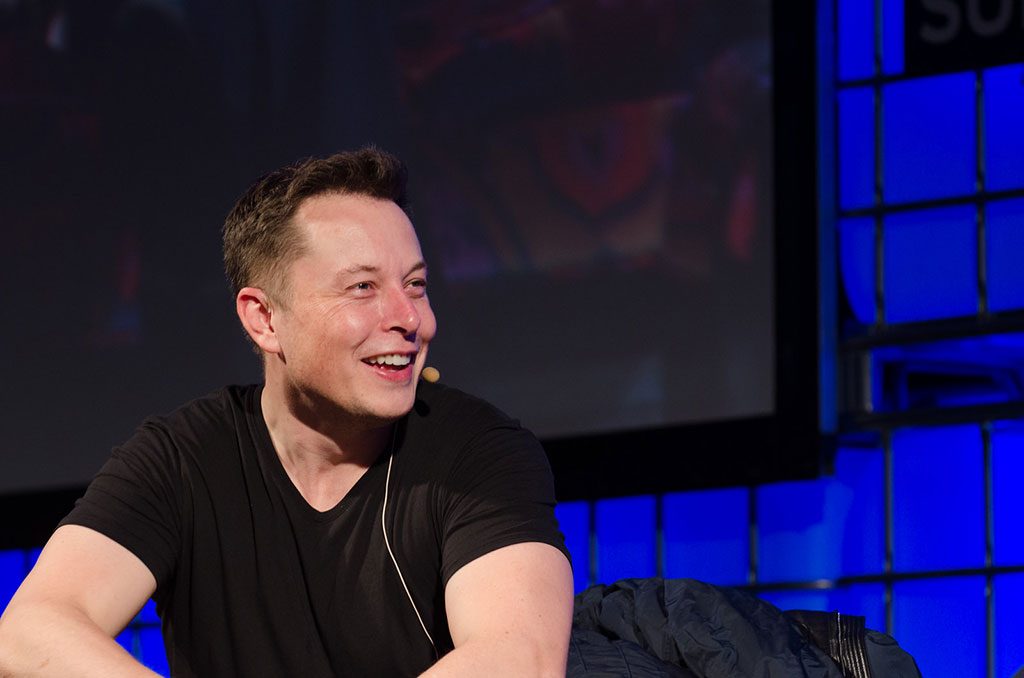
Immediate feedback is an extension of clear goals. Clear goals tell you what you’re doing and immediate feedback gives you a mechanism to see how you can do it better.
To get this right you want to tighten feedback loops. I recommend doing daily and weekly reviews of your progress. In these reviews, you want to make a conscious note of how and why you’re getting distracted or side-tracked from your goals.
Here’s an interesting bit of research from Steve Kotler’s excellent book the Rise of Superman:
“Studies have found that in professions that have less direct feedback loops such as stock analysis, psychiatry, and medicine that even the best performers get worse over time.
Surgeons, for example, are the only class of physician that improve the longer they’re out of medical school.
Why is this? Because if they make a mistake on the operating table their patient may die. That’s the power of immediate feedback.”
Many other people follow a similar trajectory in their lives. Without clear goals and immediate feedback loops, most people plateau early on in their careers and never explore the true limits of their creative potential.
3. Challenge/Skill Ratio
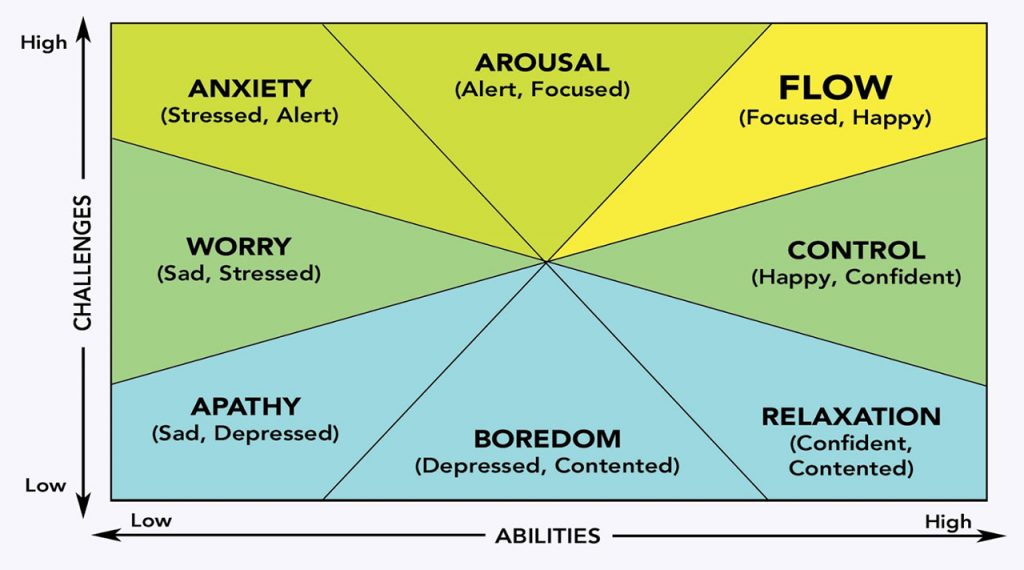
Consistently achieving a state of flow in your work requires a high level of challenge and a growth mindset focused on constant improvement.
Our daily lives are a constant balancing act between facing fear and anxiety at one extreme and dealing with boredom and apathy at the other.
When the difficulty of a task is too high for your skill level then your performance is negatively affected by anxiety and when the difficulty is too low you will feel bored, which means you will likely lose interest and be unable to pay full attention.
What Mihaly Csikszentmihalyi called the Flow Channel is found in the emotional middle point of these two extremes.
His research found that you want to gradually push beyond your comfort zone so as not to be distracted and de-motivated by too much anxiety. The sweet spot is a challenge that should be no more than just a little bit more than your skills.
You should focus on consistent improvement and improving a little each day. There is huge power in gradual improvement engineered over time.
External Flow Triggers:
In contrast to internal flow triggers that set you up psychologically for high performance, external flow triggers are qualities in your environment that can drive you deeper into the zone.
We all know that constant distraction and chronic multitasking means that we procrastinate more and take longer to get things done. Yet, how many people work with a smartphone buzzing away every 5 or 10 minutes on their desk or in their pocket?
If you want to perform a task at your best, leave your smartphone in another room. A recent study found just having your smartphone in the room with you lowers your ability to focus (even if it’s off or on airplane mode).
The foundational key to high performance and achieving flow is creating an environment that minimizes interruptions. Very few people do this today and the result is they underperform their abilities, something that can reduce both their long-term earning potential and personal sense of fulfillment.
Productivity emanates from a managed state of mind and it’s a lot about what you choose not to do. The Flow Mindset involves being ruthless about eliminating, delegating and automating tasks that don’t fall into your “zone of genius” where you have a high level of intrinsic motivators of autonomy, mastery and purpose.
Here are the 3 important external flow triggers:
1. High Consequences
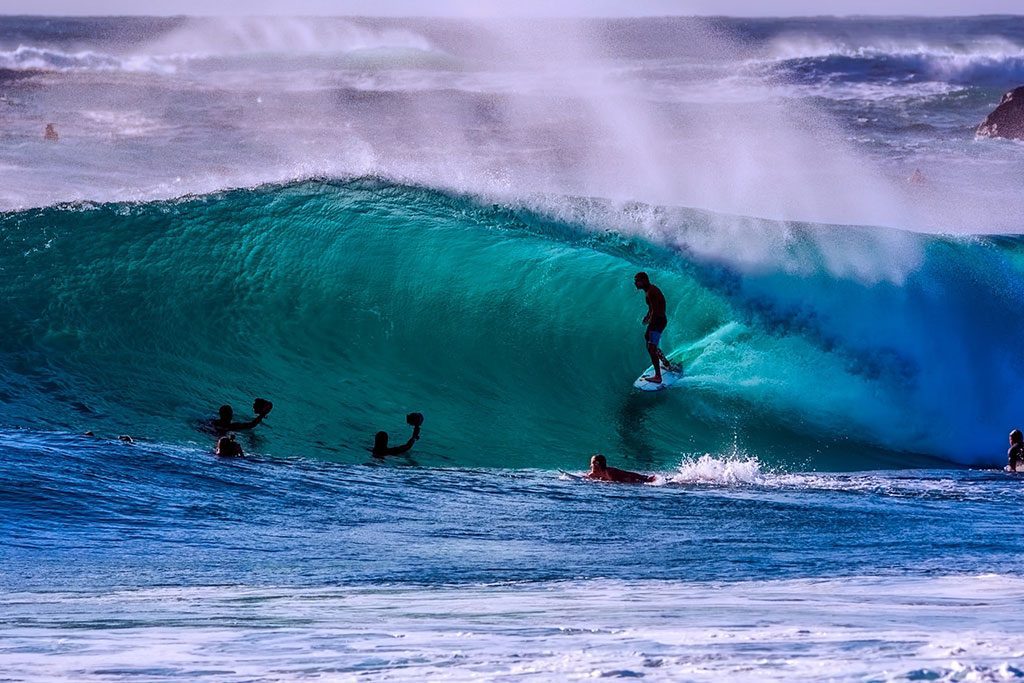
If you’re like most people, you a tendency to do things at the last minute when the pressure is high. This is the power of high consequences in action.
When you have to get things done because the consequences are too high to continue procrastinating, you leap into action and find the focus that was previously eluding you.
The key to personal mastery is a growth mindset that embraces risk and facing your fears. The way I use the high consequences trigger is by scheduling workshops, retreats, and product launches where I am publicly committed to following through by a certain date. Without these unmoveable deadlines, I’d struggle to stay motivated just like everyone else.
Necessity is the mother of invention. If you look at ultra-successful entrepreneurs like Richard Branson, they take risks by starting before they are ready. The thing is we are never mentally ready to take the big risks in life.
Instead of acting, many people get stuck in the spider’s web of overthinking and they fail to take the risks that could lead to becoming extraordinary at their craft. Learning to trust your gut becomes much easier when you must take action whereas a lack of dreams with deadlines leads to analysis paralysis and the anxiety of regret.
If you don’t try, you’ll never know, right?
High consequences events force you to “move fast and break things” and they make you more prone to realizing your goals in a short period of time.
Risk tightens our focus. As risks increases, our brains release the feel-good chemical norepinephrine and dopamine that amplify our focus and enhance our performance.
Without high consequences in the form of clear goals, unmovable deadlines and tight feedback loops most people never realize their dreams because they fall prey to Parkinson’s Law, which is the adage that “work expands so as to fill the time available for its completion”.
2. Rich Environments

A “rich environment” is a combination of novelty, unpredictability, and complexity.
Why? Because these three elements catch and hold our attention just like risk does.
- Novelty means both danger and opportunity.
- Unpredictability means you don’t know what will happen next, so you pay more attention to what’s happening now.
- Complexity means there’s lots of information coming at you at once, so you pay more attention.
If you want to be your most productive at the office on workdays, you need to add lots of novelty, unpredictability, and complexity to your leisure time.
To be highly effective when you’re plugged in, you need to completely unplug and go on some relaxing and stimulating adventures with friends and family on the weekends.
Seek out complexity in your life, especially in nature. Explore your senses in the forest. Immerse yourself in the experience of a garden of flowers in bloom. Go camping away from the man-made lights of civilization in the summer and stare up in wonder at the clear night sky.
3. Deep Embodiment

Deep embodiment is a trigger for mindfulness that comes from paying attention to several sensory inputs all at once.
There are different ways to cultivate deep embodiment, here are some of the best methods I’ve found:
1. Qigong: the ancient Taoist masters of China created a science of deep embodiment called Qigong that helps you sync your mind and body.
2. Embodied Learning: When you’re building and creating with your hands, it’s much more tactile and engaging to your senses than passively listening to a teacher.
3. Wilderness Immersion: Once you’re unplugged from the man-made lights and continual sensory overload of modern living for a few days, your natural senses come back to life and a mysterious form of awareness and embodied connection returns.
What are the times in your life where you experience deep embodiment in your activities? Schedule more of these activities during your leisure time and you’ll arrive at your desk on Monday morning with the energy and inspiration to perform your best.
Dedicate yourself to building your daily life around these flow-enhancing experiences without relying on man-made drugs or stimulants and you’ll be amazed at what you’re capable of doing.
The Flow Mindset is a powerful thing and when you embrace it, your capabilities can skyrocket.
Want to learn to apply the principles of flow psychology to boost your focus and improve your productivity? Watch my free 1-hour Flow Masterclass.


